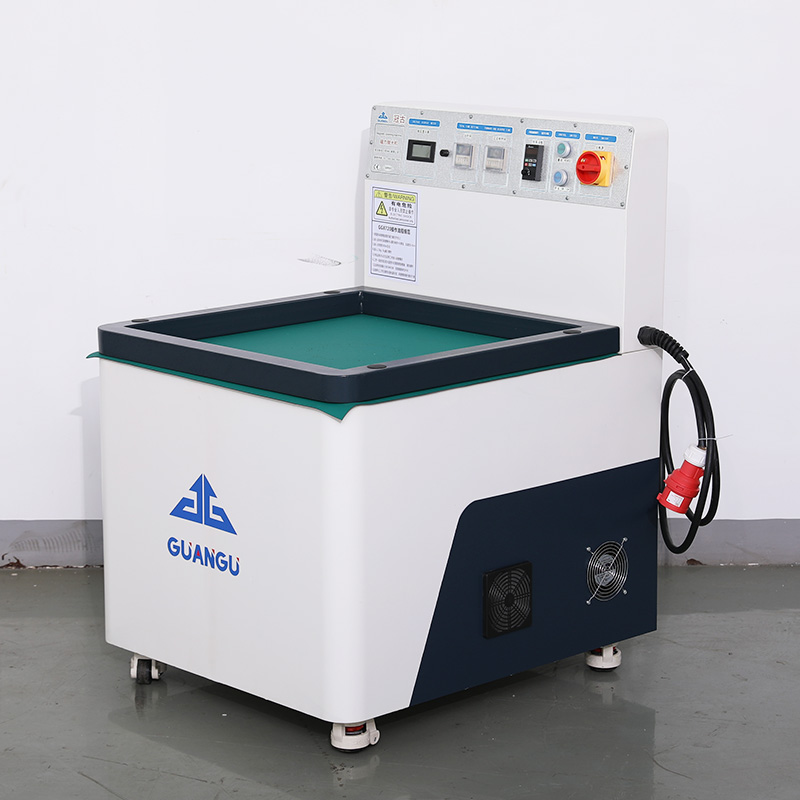Shaft parts occupy an important position in the field of machinery manufacturing, they are widely used in a variety of machines and equipment, play a role in supporting, rotating and transmitting power. The surface quality of shaft parts has a direct impact on the operational performance and life of the whole mechanical equipment. Therefore, the surface treatment process of shaft parts, especially the polishing method, has become a key link in the machining process.

The purpose of polishing shaft parts is to improve the surface quality of the parts, reduce surface roughness, enhance surface hardness and wear resistance, reduce the coefficient of friction, in order to ensure its normal operation in mechanical equipment. In addition, polished parts with high surface finish can reduce lubricant consumption and extend the service life of the equipment.
1. manual polishing
Hand polishing is the most traditional polishing method, suitable for small batch production and complex shape of the shaft parts. Manual polishing mainly uses abrasives, polishing cloths and polishing paste and other materials, through manual operation on the surface of the parts to be polished. The advantages of manual polishing is high flexibility, can be for the parts of the local area for fine processing; disadvantages are low productivity, labor intensity, polishing quality by the operator skill level has a greater impact.
2. mechanical polishing
Mechanical polishing is the use of special equipment for shaft parts polishing method, can be divided into dry polishing and wet polishing two kinds. Dry polishing using abrasives, polishing cloth and polishing paste and other materials, through mechanical devices on the surface of the parts grinding, friction, in order to achieve the polishing effect. Wet polishing is to add liquid coolant in the polishing process, which can effectively reduce the surface temperature of the parts and improve the polishing quality. Mechanical polishing has the advantage of high productivity, polishing quality and stability; disadvantage is that the equipment investment costs are higher, the shape and size of the parts required more stringent.
3. Electrolytic polishing
Electrolytic polishing is a use of electrolytic principle of shaft parts polishing method. In the electrolytic polishing process, the parts as the anode, connected to the positive pole of the power supply; polishing tool as the cathode, connected to the negative pole of the power supply. Through the conductive effect of the electrolyte solution, the Metal on the anode undergoes a redox reaction, thus realizing the polishing effect. The advantages of electrolytic polishing is fast polishing speed, high surface quality; disadvantages are the composition of the electrolyte solution and process parameters require high, complex equipment, high cost.
4. Polishing robot
With the development of automation technology, polishing robots are gradually applied to the polishing production of shaft parts. Polishing robot has a high degree of automation, adaptability, stable polishing quality and other characteristics. It can automatically adjust the polishing path and parameters according to the shape and size of the parts to achieve efficient and accurate polishing. The advantages of polishing robot is to improve production efficiency, reduce labor costs; disadvantages are higher equipment investment costs, the shape and size of the parts more stringent requirements.
1. High-efficiency, precision polishing process
With the development of modern manufacturing industry, the surface quality of shaft parts requires more and more high. Therefore, high efficiency, precision polishing process will become the development trend in the field of shaft parts polishing. This requires polishing equipment with a higher degree of automation, more accurate control system and more advanced polishing technology.
2. Green, environmentally friendly polishing process
In the growing awareness of environmental protection today, green, environmentally friendly polishing process is gradually receiving attention. Non-polluting, low-energy polishing methods will become an important research direction in the field of shaft parts polishing in the future. For example, the development of environmentally friendly polishing fluid, the use of recycling and reuse technology.
3. Composite polishing process
In order to improve the polishing quality and efficiency of shaft parts, research and development of composite polishing process has become a trend. Composite polishing process will combine a variety of polishing methods, such as the combination of mechanical polishing and electrolytic polishing, in order to achieve better polishing results.
In short, the polishing methods of shaft parts are constantly developing and innovating. With the progress of science and technology, the future polishing process of shaft parts will be more efficient, precise and environmentally friendly.